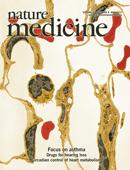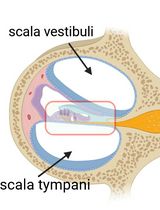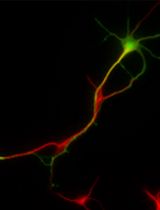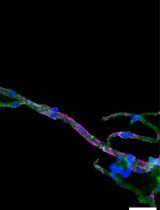- EN - English
- CN - 中文
A Protocol for Electrophoretic Mobility Shift Assay (EMSA) from Primary Neuron
原代神经元的电泳迁移改变分析(EMSA)方法
发布: 2012年12月05日第2卷第23期 DOI: 10.21769/BioProtoc.300 浏览次数: 29438
Abstract
The interaction of transcriptional or co-transcriptional factors with DNA is crucial for changes of neuronal gene expression during normal brain development as well as neurodegeneration. The electrophoretic mobility shift assay (EMSA) is a very powerful technique for studying changes of neuronal gene expression and determining protein: DNA interactions. EMSA can be used qualitatively to identify specific transcriptional or co-transcriptional factors in brain crude lysates or primary neurons and, in conjunction with mutagenesis, to identify the important binding sequences within a given gene. An advantage of studying protein: DNA interaction by an electrophoretic assay provides a better understanding of epigenetic changes during normal brain development and neurodegenerative process.
Materials and Reagents
- Neuronal cell pellet
- Biotin 5' end-labeled and non-labeled DNA probes (competition) (Integrated DNA Technologies)
Table S- sequences of EMSA probes
- Positively charged nylon membrane (Sigma-Aldrich, catalog number: Z670197 )
- Tris base
- Boric acid
- EDTA
- BSA
- Poly (dIdC) (0.5 μg/μl) (Pierce Antibodies, catalog number: 20148 )
- Antibody (ab1437)
- 5x loading buffer (QIAGEN, catalog number: 1037650 )
- X-ray film
- High-quality blotting paper (Whatman, catalog number: 3030-931 )
- Polyacrylamide gel in 0.5x TBE
- Cytoplasmic extract buffer (NE-PER Nuclear and Cytoplasmic Extraction Kit) (Pierce Antibodies, catalog number: 78835 )
- Washing buffer (LightShift Chemiluminescent EMSA Kit) (Pierce Antibodies, catalog number: 20148 )
- Nuclear extraction buffer (NE-PER Nuclear and Cytoplasmic Extraction Kit) (Pierce Antibodies, catalog number: 78835 )
- 2x reaction buffer (LightShift Chemiluminescent EMSA Kit) (Pierce Antibodies, catalog number: 20148 )
- Acrylamide
- Bis-acrylamide
- TBE buffer
- TEMED
- Ammonium persufate
- Phosphatase inhibitors
- 6% non-denature PAGE gel (see Recipes)
- 5x TBE (pH 8.3) (see Recipes)
Equipment
- Centrifuges
- UV lamp or crosslinking device equipped with 254 nm bulbs or 312 nm transilluminator
- Electrophoresis apparatus
- Electroblotter or capillary transfer apparatus
- 1.5 ml microcentrifuge tube
Procedure
文章信息
版权信息
© 2012 The Authors; exclusive licensee Bio-protocol LLC.
如何引用
Li, J. (2012). A Protocol for Electrophoretic Mobility Shift Assay (EMSA) from Primary Neuron. Bio-protocol 2(23): e300. DOI: 10.21769/BioProtoc.300.
分类
神经科学 > 发育 > 神经元
分子生物学 > DNA > DNA-蛋白质相互作用
细胞生物学 > 组织分析 > 组织分离
您对这篇实验方法有问题吗?
在此处发布您的问题,我们将邀请本文作者来回答。同时,我们会将您的问题发布到Bio-protocol Exchange,以便寻求社区成员的帮助。
Share
Bluesky
X
Copy link












